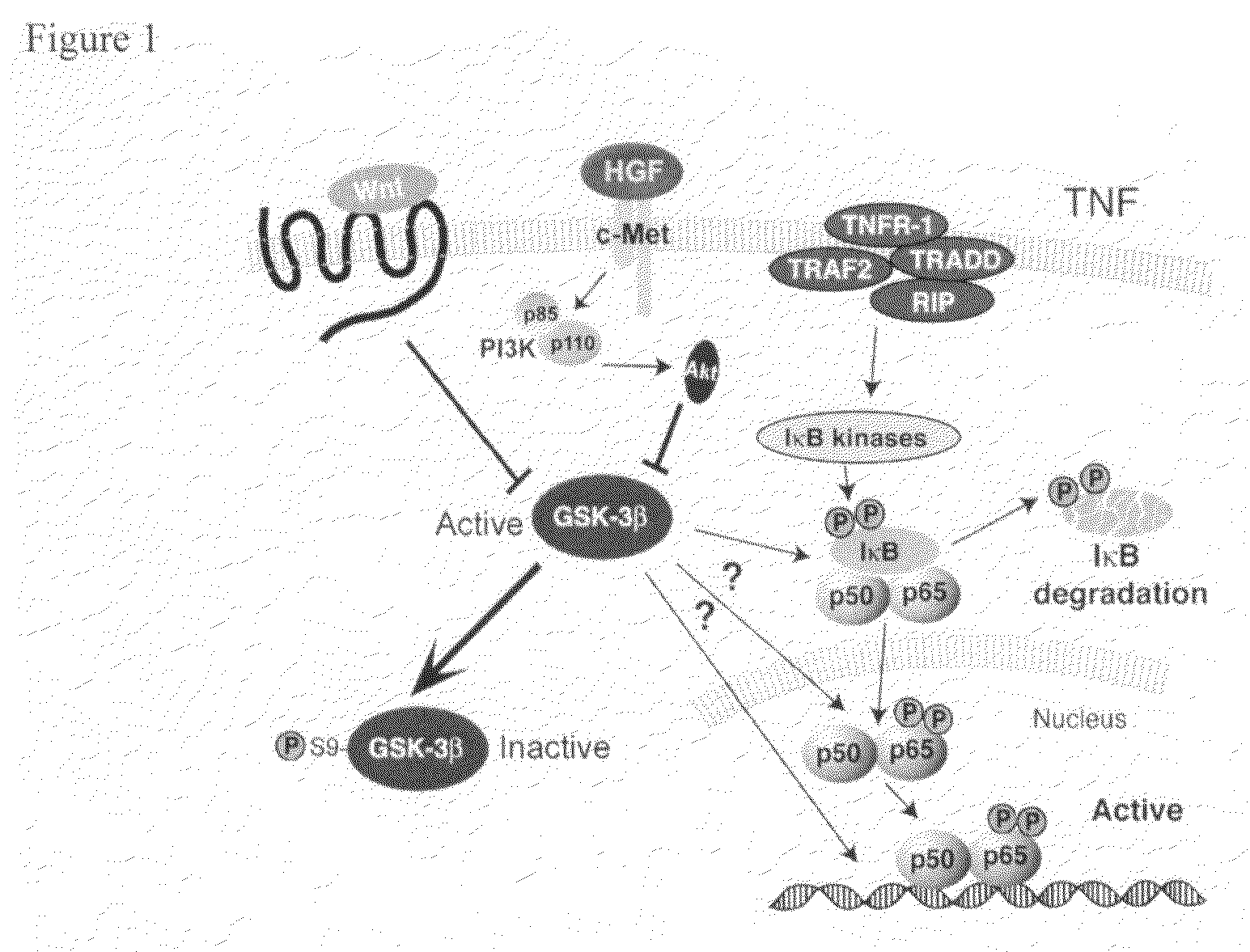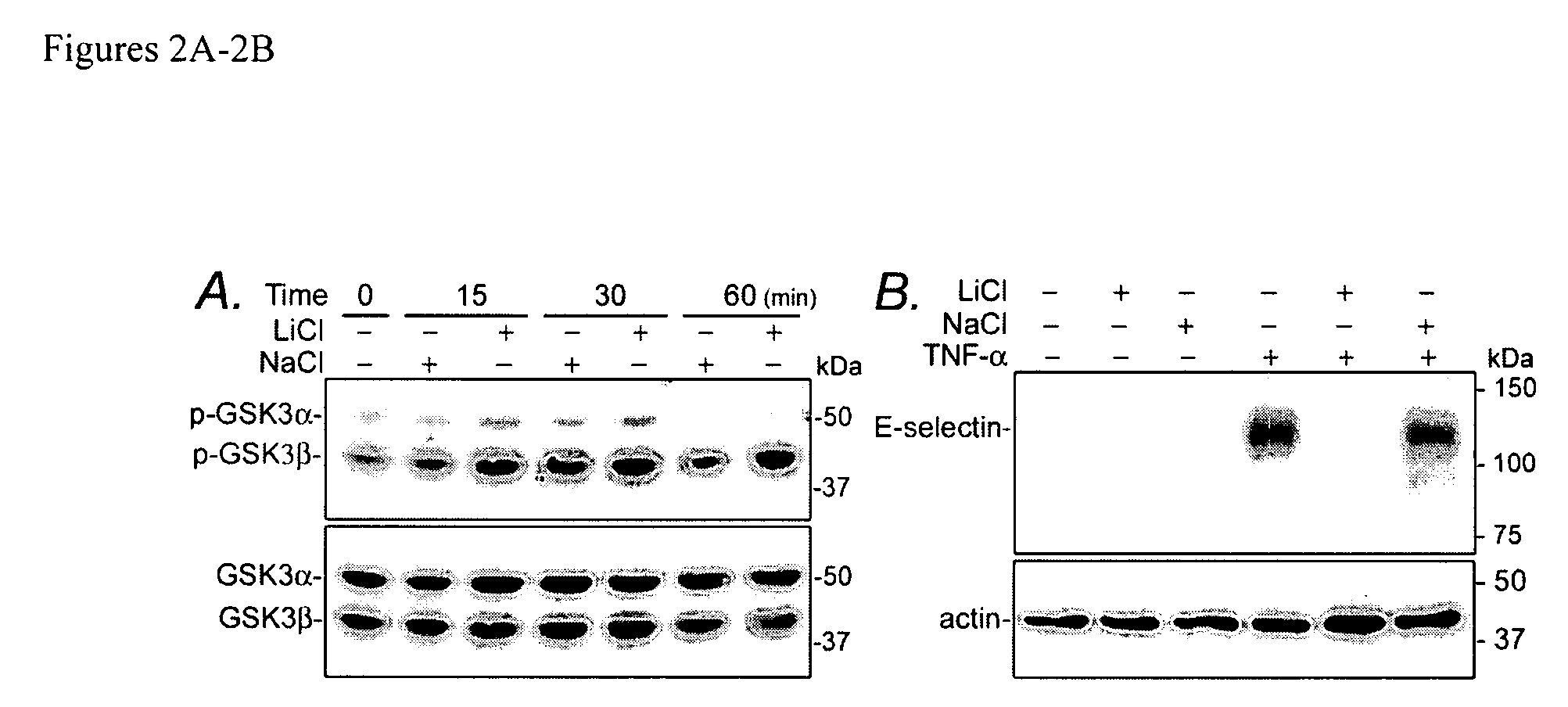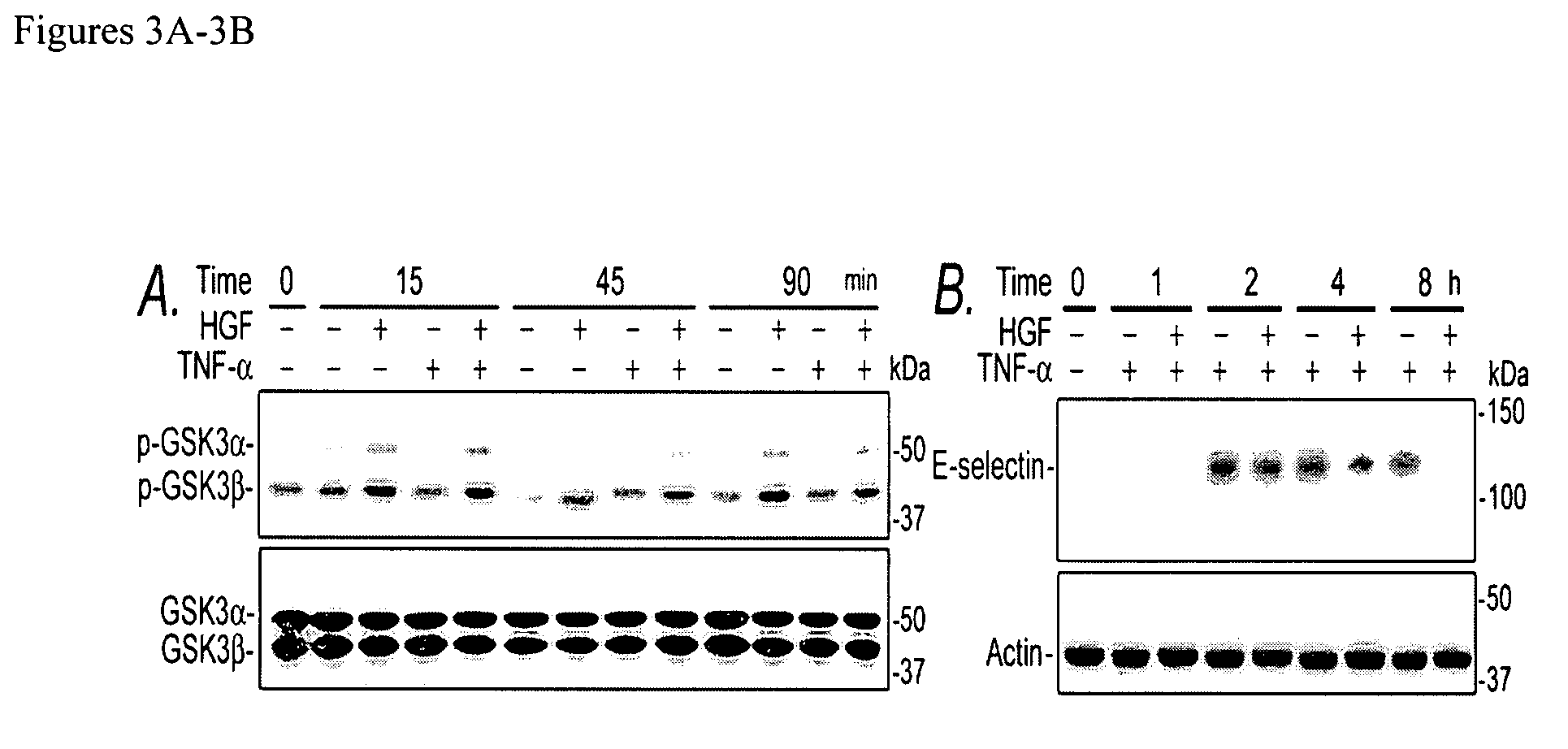Compositions and methods for detecting and treating renal injury and inflammation
a technology of inflammation and inflammatory conditions, applied in the field of inflammation conditions and kidney injury and disease, can solve the problems of short-term damage with minimal or no symptoms, significant adverse side effects, and autoimmune disorders may also damage the kidneys, and achieve the effect of increasing the expression or activity of gsk3b, diagnosing renal injury in a mammal, and increasing the expression level of gsk3b
- Summary
- Abstract
- Description
- Claims
- Application Information
AI Technical Summary
Benefits of technology
Problems solved by technology
Method used
Image
Examples
example 1
Anti-inflammatory Effect of HGF in Progressive Chronic Kidney Disease: Targeting the Inflamed Vascular Endothelium
[0241]We examined the molecular mechanism of HGF's anti-inflammatory actions in a model of CKD. Beginning 2 wk after ⅚th nephrectomy, rats received exogenous HGF, neutralization of endogenous HGF by daily injection of an anti-HGF antibody, or preimmune IgG for 2 wk. HGF ameliorated, whereas blocking HGF worsened inflammation in remnant kidneys. There were parallel alterations in endothelial activation and inflammation, marked by de novo E-selectin expression and leukocyte adhesion to renal vascular endothelium. In vitro, HGF abrogated monocyte adhesion to TNF-α-activated endothelial monolayers and suppressed endothelial expression of E-selectin, which depended on NF-kB signaling. In addition, HGF suppressed TNF-a induced NF-kB reporter gene activity and counteracted NF-kB interaction with kB elements at the E-selectin gene level. Studies revealed that suppression of NF-...
example 2
Hepatocyte Growth Factor Suppresses Acute Renal Inflammation by Inhibition of Endothelial E-selectin
[0242]Vascular endothelial activation, marked by expression of E-selectin, is an essential event in the process of leukocyte extravasation and inflammation. We examined the effect of HGF on endothelial E-selectin expression in acute inflammation induced by TNF-α. In vitro, HGF suppressed TNF-α-induced expression of E-selectin in human umbilical vein endothelial cells (HUVEC) and inhibited E-selectin mediated monocytic adhesion to endothelial cells. HGF activated phosphatidylinositol 3-kinase (PI3K)-Akt that in turn inhibited its downstream transducer, GSK-3b, by phosphorylation at serine-9. Blockade of the PI3K-Akt pathway abrogated HGF induced inhibition of GSK3b and suppression of E-selectin. Inhibition of GSK3b by lithium also suppressed TNF-α-induced E-selectin expression and monocytic adhesion, mimicking the action of HGF. Ectopic expression of an uninhibitable mutant GSK3b aboli...
example 3
Activation of PI3K-Akt-GSK3βPathway Mediates Hepatocvte Growth Factor Inhibition of RANTES Expression in Renal Tubular Epithelial Cells.
[0243]HGF suppresses basal and TNF-α-induced expression of RANTES in a time and dose dependent fashion in HKC. HGF elicited PI3K-Akt activation and inhibited GSK3, by phosphorylation at Ser-9. Blocking PI3K-Akt abrogated HGF inhibition of RANTES, demonstrating that the PI3K-Akt pathway mediates HGF action. Specific inhibition of GSK3 activity by lithium also suppressed basal and TNF-a-induced RANTES expression, mimicking HGF. Overexpression of wild type GSK3β in HKC did not alter the inhibitory action of HGF on RANTES. In contrast, expression of an uninhibitable mutant of GSK3β (S9A-GSK3β) abolished HGF inhibition of basal and TNF-α stimulated RANTES expression. PI3K-Akt activation and subsequent inhibitory phosphorylation of GSK3β are required for HGF suppression of RANTES in HKC.
PUM
| Property | Measurement | Unit |
|---|---|---|
| pH | aaaaa | aaaaa |
| pH | aaaaa | aaaaa |
| wavelengths | aaaaa | aaaaa |
Abstract
Description
Claims
Application Information
 Login to View More
Login to View More - R&D
- Intellectual Property
- Life Sciences
- Materials
- Tech Scout
- Unparalleled Data Quality
- Higher Quality Content
- 60% Fewer Hallucinations
Browse by: Latest US Patents, China's latest patents, Technical Efficacy Thesaurus, Application Domain, Technology Topic, Popular Technical Reports.
© 2025 PatSnap. All rights reserved.Legal|Privacy policy|Modern Slavery Act Transparency Statement|Sitemap|About US| Contact US: help@patsnap.com



